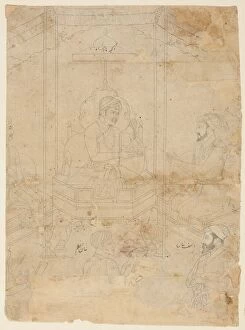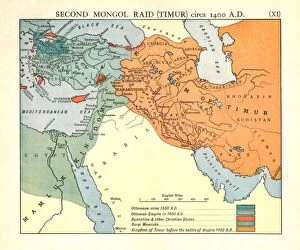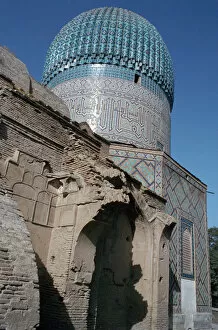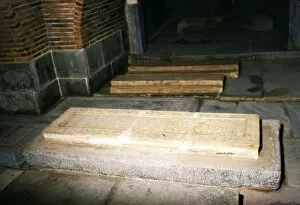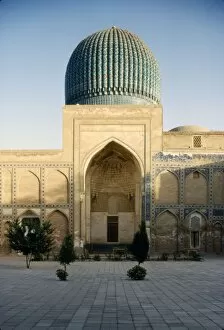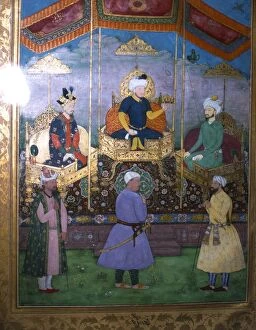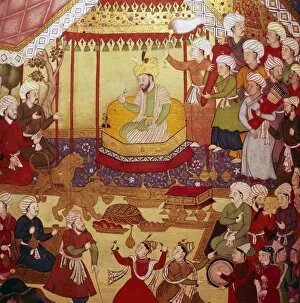Timur The Lame Collection
"Timur the Lame: A Legacy Carved in Stone" Step into the ancient city of Samarkand, where history whispers tales of a formidable conqueror known as Timur the Lame
For sale as Licensed Images
Choose your image, Select your licence and Download the media
"Timur the Lame: A Legacy Carved in Stone" Step into the ancient city of Samarkand, where history whispers tales of a formidable conqueror known as Timur the Lame. His final resting place, the Tomb of Timur (Tamburlaine), stands proudly as a testament to his power and ambition. Built in 1404, the Mausoleum of Gur-e-Amir exudes grandeur and mystique. Intriguing artworks from different eras offer glimpses into Timur's life and conquests. "Akbar Offering Timurs Crown to Shah Jahan, " a Mughal masterpiece dating back to ca. 1650-1700, captures an iconic moment when one emperor pays homage to another. Delve deeper into history with folios such as "Timur before Battle" from the Zafarnama, revealing his strategic brilliance during battles like the Conquest of Baghdad. Witness Sultan Bayazid humbled before this indomitable leader in an exquisite folio from an Akbarnama. The intensity of warfare comes alive through captivating scenes like "Battle Scene" from Sharaf al-Din Ali Yazdi's Zafarnama and Emery Walker Ltd's depiction of the Second Mongol Raid by Timur circa 1450 AD. Not limited to military prowess alone, Timur also left behind architectural marvels like Gur-Emir Mausoleum's majestic door captured beautifully by Vasily Vereshchagin in 1873 (1965). Explore further with images showcasing Samarkand Stone Lectern at Bibi-Khanum Mosque ruins—a relic that witnessed centuries pass by. As you stand amidst these remnants of a glorious past, let your imagination transport you back in time—when Kouli Khan reigned supreme or when Turkic forces clashed with Mongols under Timur's command around c1400 (1908).

